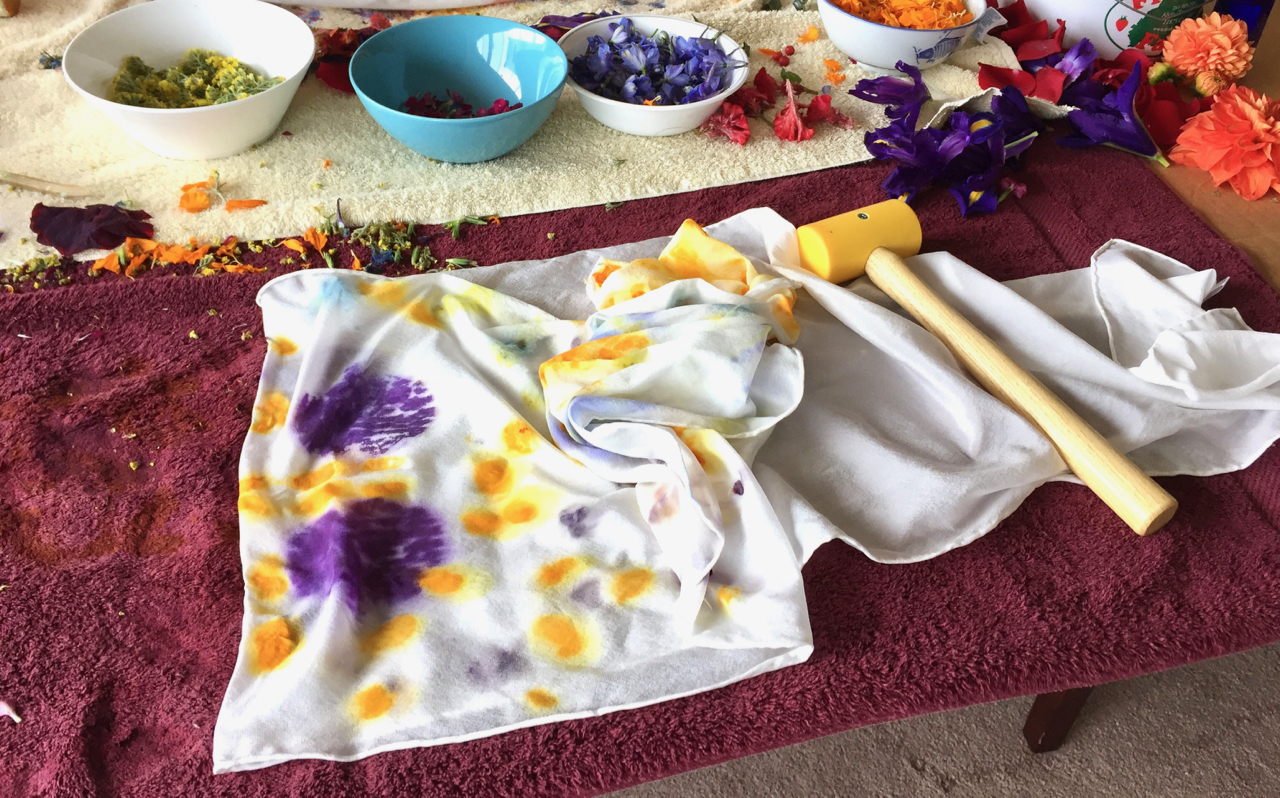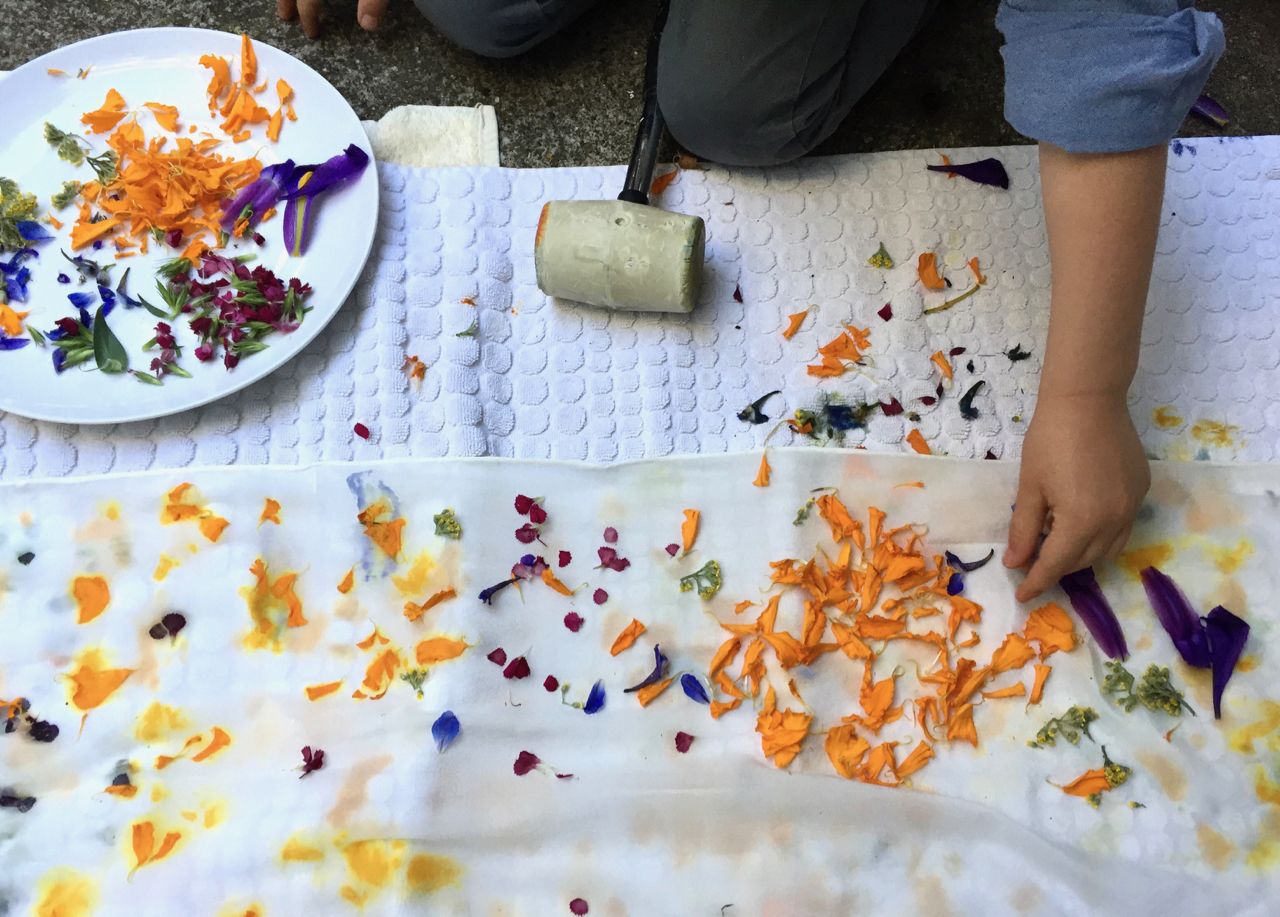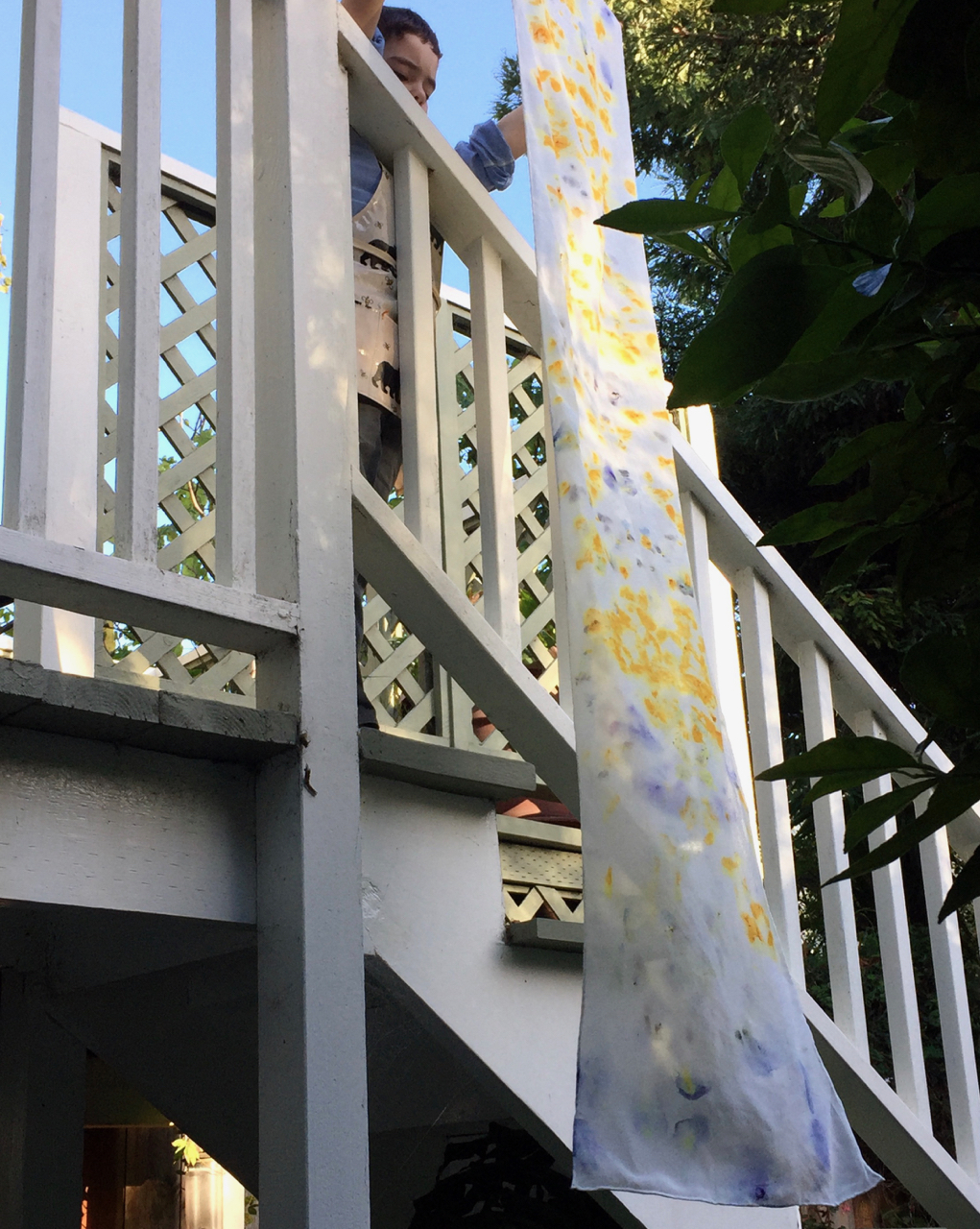Hapa Zome (The Beauty of Hitting Flowers with Hammers)
In June 2015, I attended a workshop by Plants People at West Coast Craft. The workshop was on one of those Sundays when there couldn't have been more traffic or less parking around Fort Mason. It was so bad that, looking back, it is remarkable that my friend Margaret, her friend Aisling, and I all managed to make it to the class, never mind create beautiful flower prints. But we did.
"Hapa Zome" is the name that India Flint gave the natural dyeing process of placing flowers on fabric, folding the fabric, and then hitting the fabric firmly and repeatedly with a hammer (or mallet) to transfer the flower pigments to the cloth. The color transfer and prints you get are incredible. Even when you think you've totally messed it up, the petals move, and you don't achieve even remotely what you had imagined, the result is lovely. And there's no better craft than this one if you're feeling impatient, frustrated or you just want to hit stuff.
Ever since the workshop, Margaret and I have been saying how much we wanted to do the project again. We finally got around to it a few weekends ago. Margaret (whose many talents include floral design) picked up the flowers from the Flower Mart and bought the alum, Maja got the silk scarves, and I brought spray bottles, mallets, and towels.
We sprayed our scarves with a solution of water and alum, and then got to hammering, spraying more of the alum solution as needed. (Alum is the mordant we used, and mordant is what helps color stay on fabric rather than just disappear).



We put cardboard on the table under the towels, but three strong women hammering is no joke. By the time we were done, one of the bolts holding Margaret's table together had worked its way off a screw and onto the floor. My point is, choose your hammering surface carefully and look for loose bolts when you're done. You might opt for no towels, as well, if you want a crisper imprint of the flowers. Try it and see what happens. We mixed our alum and water solution without any regard for science or dyeing authority. If you want to do it "right," you can consult natural dye resources for ratios of the amount of mordant to use for a given amount of fabric and prepare the fabric accordingly. You can also choose flowers that are commonly used for natural dyeing in order to get a more lasting result. The wonderful thing about this process (or disappointing thing, depending on how much you love your initial result) is that over time, the colors of the flower imprints shift, fade, and change. As that happens, or as you find other flowers you like, you can add more prints to your piece.
Wyatt was more than just a little bit jealous that I spent the afternoon with Margaret (she was his teacher before she became my friend), and he refused to accept that he wouldn't be hammering flowers himself. So he and I did another scarf the next day.
He loved the whole process. I mean, who wouldn't? Swinging a heavy mallet also tired him out, so there's that, too.






So, definitely try flower hammering.
Also! I have a new soup recipe to share: Sweet Potato Coconut Curry Soup. No photos, but it's orange like the sweet potatoes in it, and it's great. Don't let the list of ingredients scare you off--most of them are for the spiced chickpeas/garbanzo beans (which I haven't yet made because we had some leftover from Nopalito). The soup is so great, in fact, that Wyatt brought it for lunch a couple of times last week, and the teachers asked for tastes and then asked me for the recipe. My adjustments to the recipe as are: a pinch or two of cayenne (instead of 1/4 tsp, because one of us doesn't like things too spicy), 1 tablespoon of curry powder (instead of 2 tablespoons), and a sprinkle of coconut vinegar or sherry vinegar to finish the soup just before serving. The recipe also doubles very well, and when I added a cup of water that one time I was short on coconut milk, the soup was still just as good.
Last but not least, I hope your Halloween was as good as this little panda's was.


